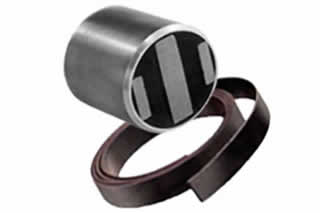
Do you know the four ways that ferromagnetic materials can be magnetized? Examples of ferromagnetic materials include iron, cobalt and nickel. They don’t produce a magnetic field — at least not by default. Only after magnetizing them will these materials produce a magnetic field. Below are the four ways that ferromagnetic materials can be magnetized.
#1) Exposure to Heat
Exposing ferromagnetic materials to heat will magnetize them. This is one of the most common ways, in fact, that magnets are created. Ferromagnetic objects are initially heated above their Curie temperature. Also known as a Curie point, a Curie temperature is the temperature at which ferromagnetic materials gain or lose their magnetic properties. After being heated beyond its Curie temperature, the ferromagnetic material is allowed to cool. It will then become magnetic.
#2) External Magnetic Field
External magnetic fields can be used to magnetize ferromagnetic materials. In other words, if you place a ferromagnetic material near a magnet, it will absorb some of the latter’s magnetic field. When you remove the ferromagnetic object from the external magnetic field, it will exhibit magnetic properties. The object will then produce its own magnetic field — even without the presence of the external magnetic field.
#3) Stroking
Another way to magnetize ferromagnetic materials is stroking. Stroking is the process of aligning the poles. It involves moving an existing magnet from the top of a ferromagnetic object to the bottom. You’ll need to use a circular motion, however, so that both the North and South poles of the existing magnet strike the ferromagnetic object. When done correctly, the ferromagnetic object will become magnetized.
#4) Electromagnetism
Electromagnetism is commonly used to magnetize ferromagnetic materials. This method involves the use of an electrical current. When an electric current flows through a coil of wire wrapped around a ferromagnetic object, it will generate a magnetic field. This magnetic field temporarily aligns the atomic dipoles in the material, creating a temporary magnet.
Electromagnets are widely used in applications where the magnetic field needs to be controlled, such as in electric motors and magnetic resonance imaging (MRI) machines. When compared to other types of magnets, electromagnets are more controllable. The strength of their magnetic field can be controlled.
In Conclusion
There are four primary ways that ferromagnetic materials can be magnetized. They include exposure to heat, using an external magnetic field, stroking or electromagnetism. With these methods, ferromagnetic objects will produce their own magnetic field.
